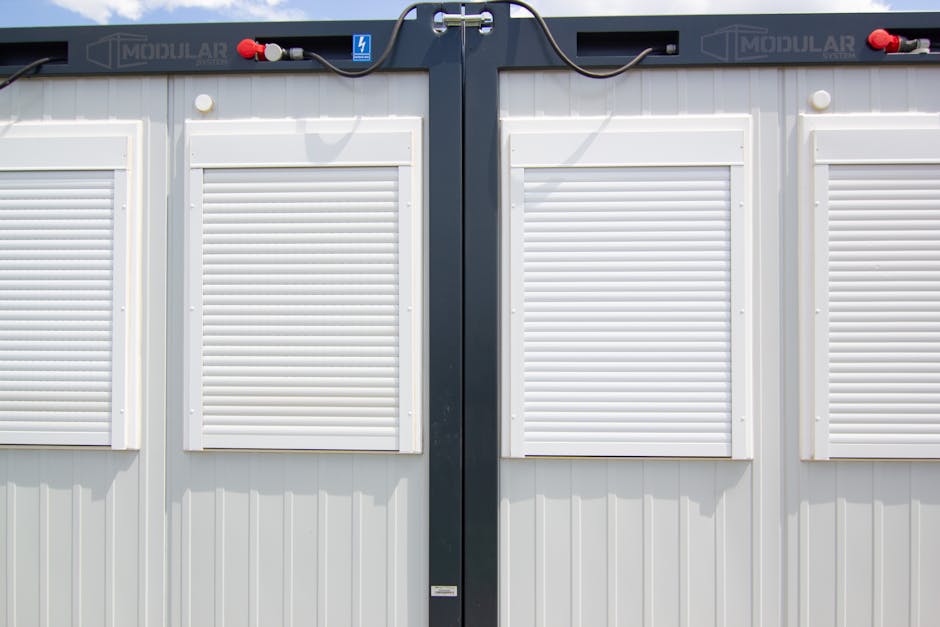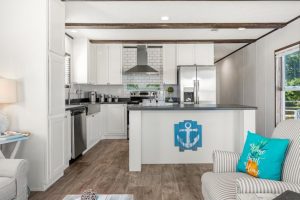Innovative Solutions for Workforce Housing: The Modular Approach
Discover how modular workforce housing offers fast, affordable, and sustainable solutions for modern employee accommodation needs.
The Rise of Modular Workforce Housing Solutions
Modular workforce housing—a form of prefabricated building—refers to living quarters constructed off-site in a factory-controlled environment and transported to the final location for assembly. This approach offers a rapid, cost-effective housing solution for remote work sites and labor-intensive projects.
Key Facts About Modular Workforce Housing:
- Time Savings: Reduces project timelines by 30-50% compared to traditional construction
- Cost Efficiency: Achieves up to 75% savings in logistics costs
- Deployment Scale: Can accommodate anywhere from 48 to 2,400 beds
- Construction Quality: Built in factory-controlled environments with reduced errors and defects
- Installation Speed: Many units available for immediate delivery and rapid setup
In today’s industrial landscape, companies across mining, oil and gas, construction, and other sectors face significant challenges in housing their workforce—especially in remote or underserved locations. The traditional approach of building permanent structures is often impractical due to time constraints, budget limitations, and the temporary nature of many projects.
As one site manager from a mining operation noted, “After an exhaustive day of labor at the worksite, the significance of rest and relaxation cannot be overstated.” This perspective highlights why quality workforce accommodations have become a strategic priority rather than just an operational necessity.
Modular workforce housing addresses these challenges through innovative off-site construction methods that prioritize speed, quality, and worker well-being. These structures range from basic dormitory-style accommodations to comprehensive camp systems that include kitchens, dining halls, recreation facilities, and medical clinics—essentially creating self-contained communities where workers can live comfortably and safely.
Unlike conventional construction, modular units are manufactured simultaneously while site preparation occurs, dramatically reducing project timelines. This parallel workflow, combined with the controlled factory environment, ensures consistent quality and significantly lower waste.

Simple modular workforce housing glossary:
Why Modular Workforce Housing Is Changing Employee Accommodation
The evolution of modular workforce housing has transformed how companies approach employee accommodation, particularly for projects in remote or underserved locations. Traditional construction methods often prove impractical when facing tight timelines, budget constraints, and the temporary nature of many industrial projects.
“We’re redefining remote workforce accommodation—boosting productivity, slashing costs, and ensuring comfort,” explains one industry expert. This shift isn’t merely about providing a place to sleep; it’s about creating environments that support worker wellbeing and project success.
The affordability factor is a game-changer. With traditional construction costs continuing to rise, modular workforce housing offers a predictable, cost-effective alternative. The controlled manufacturing environment eliminates weather delays, reduces material waste, and optimizes labor efficiency—all translating to significant savings that benefit employers’ bottom lines.
Remote sites present unique challenges that modular solutions are specifically designed to address. Whether it’s mining operations in the Australian outback, oil fields in Texas, or construction projects in areas with limited infrastructure, modular units can be rapidly deployed with minimal site preparation. As one project manager puts it, “Our skid-mounted buildings offer a modular and portable solution without the need to build a foundation for the structure.”

The resilience of modern modular workforce housing is another remarkable advantage. Today’s units are engineered to withstand extreme conditions, from arctic cold to desert heat. This durability ensures that workers have safe, comfortable accommodations regardless of what Mother Nature throws their way.
Perhaps most importantly, quality housing has become a key factor in worker retention. As labor markets tighten across industries, companies are recognizing that comfortable, well-appointed living quarters are no longer a luxury—they’re a competitive necessity. As one agricultural manager noted, “A bloke who sleeps well works well,” highlighting the direct connection between quality rest and workplace performance.
Modular Workforce Housing vs. Traditional Builds—Speed, Cost, Quality
When comparing modular workforce housing to conventional construction methods, three factors consistently stand out: speed, cost, and quality. The differences are striking and worth understanding in detail.
The speed advantage is perhaps the most obvious benefit. Modular construction can reduce overall project timelines by 30-50% compared to traditional methods. This dramatic time savings comes from the parallel workflow where site preparation and foundation work occur simultaneously with the manufacturing of the housing modules. While crews are preparing the site, the actual living quarters are being assembled in a factory-controlled environment.
A project that might take 12-18 months using conventional methods can often be completed in just 6-9 months with modular construction. For companies facing tight project deadlines or seasonal constraints, this acceleration can be the difference between success and failure.
The financial advantages of modular workforce housing are equally impressive. Companies typically see up to 75% savings in logistics costs compared to conventional site-built solutions. They also benefit from reduced labor costs due to faster project completion, minimized material waste through precision manufacturing, lower financing costs due to shorter construction periods, and potential tax benefits through depreciation schedules for temporary structures.
Contrary to outdated perceptions, modern modular buildings often exceed the quality of traditional construction. The factory-controlled environment eliminates weather-related quality issues, while standardized processes ensure consistent results. Rigorous quality control checks at multiple production stages, precision cutting and assembly, and climate-controlled manufacturing all contribute to a superior final product.
| Factor | Traditional Construction | Modular Workforce Housing |
|---|---|---|
| Timeline | 12-18 months | 6-9 months (30-50% faster) |
| Weather Delays | Frequent | Minimal (indoor manufacturing) |
| Quality Control | Variable (site conditions) | Consistent (factory environment) |
| Material Waste | 15-20% | 2-5% |
| Labor Costs | Higher (longer duration) | Lower (efficient processes) |
| Site Disruption | Extensive | Minimal |
| Flexibility | Limited | Highly adaptable/relocatable |
| Logistics Costs | Baseline | Up to 75% savings |
At Manufactured Housing Consultants, we’ve seen how these advantages translate to successful workforce housing projects across Texas. Our clients consistently report that the speed, predictability, and quality of modular solutions provide significant competitive advantages in tight labor markets.
Key Benefits for Employers and Workers
The advantages of modular workforce housing extend far beyond mere logistics and construction efficiencies. Both employers and workers experience tangible benefits that impact the bottom line and quality of life.
For employers, the benefits are substantial and directly affect operational success. Improved productivity comes naturally when workers are well-rested. Quality housing with proper noise insulation, climate control, and comfortable bedding ensures workers get the rest they need to perform at their best. Improved safety records follow as a natural consequence, since worker fatigue is a leading cause of workplace accidents, particularly in high-risk industries like mining, construction, and oil and gas. According to industry data, agriculture remains the leading sector in workplace fatalities, with fatigue cited as a major factor. Quality on-site housing reduces commute times and provides better rest opportunities, directly improving safety outcomes.
Reduced turnover is another significant advantage in today’s competitive labor market. Companies offering superior housing report turnover rates 15-20% lower than industry averages. As one HR director noted, “Poor housing directly leads to poor health, lower productivity, and high turnover.” This connects directly to talent attraction capabilities – the ability to offer comfortable, well-appointed housing can be a decisive factor in recruiting skilled workers to remote locations. One case study highlighted a remote Queensland town that offered “$400K, free rent, a car, and five weeks’ leave to attract a doctor” but still struggled until they addressed the housing quality issue.
For workers, the benefits are equally meaningful and contribute to overall wellbeing. Modern modular workforce housing prioritizes elements that support physical and mental health. These include noise pollution minimization in sleeping quarters, plush bedding and quality furnishings, individual climate control, personal storage space, and access to proper nutrition through on-site dining facilities.
Well-designed workforce housing includes communal areas that foster social interaction and camaraderie—critical factors for mental health during extended deployments. Recreation facilities, shared dining spaces, and common areas help combat isolation and create a sense of community and social support. Despite being in a work environment, quality housing helps maintain some separation between professional and personal life. Private spaces, entertainment options, and comfortable amenities help workers decompress after shifts, supporting better work-life balance.
Many modern workforce housing complexes include on-site medical facilities or telehealth options, ensuring workers have access to health support even in remote locations. According to scientific research on worker fatigue, adequate rest is essential for cognitive function, physical performance, and emotional regulation—all critical factors in workplace safety and productivity.
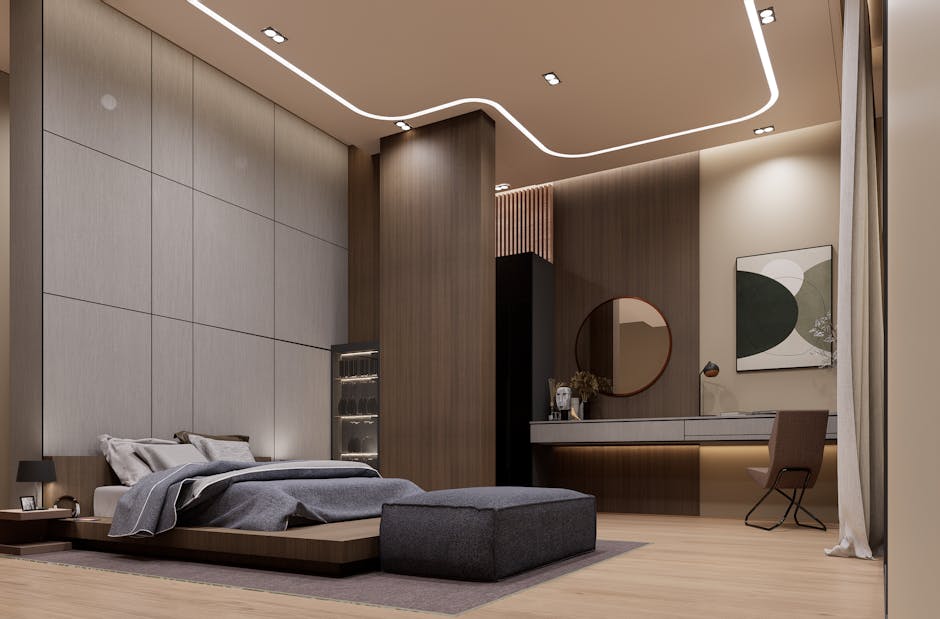
Progressive employers are increasingly incorporating wellness programs into their workforce housing strategies. These might include fitness facilities, nutritional meal planning, mental health resources, and sleep hygiene education. The return on investment for these programs is compelling, with studies showing returns of $3-6 for every dollar invested in employee wellness.
At Manufactured Housing Consultants, we work closely with employers across Texas to design modular workforce housing solutions that prioritize worker well-being while meeting operational requirements and budget constraints.
Industries & Unit Types Driving Demand for Modular Workforce Housing
The demand for modular workforce housing spans numerous industries, each with unique requirements and challenges. Understanding which sectors are leading this trend helps illustrate the versatility and adaptability of modular solutions.
The mining industry has been at the forefront of adopting modular housing solutions. Remote mine sites often require substantial workforces for extended periods. Modular solutions provide comfortable accommodations while allowing for reclamation once operations conclude. Major mining companies like Rio Tinto, Agnico Eagle, and Stornoway Diamonds have implemented large-scale modular housing projects with impressive results.
The oil & gas exploration sector has unique housing needs due to the boom-and-bust nature of oil field development. When new drilling technologies drive rapid workforce growth in small towns, housing shortages become acute. Modular “man camps” can be quickly deployed and later relocated as needed, providing flexibility that traditional construction simply can’t match.
Large-scale construction projects, especially in underdeveloped areas, often require housing for hundreds of workers. Modular solutions allow for strategic placement near work sites, reducing commute times and fatigue-related accidents. These temporary communities can include everything from basic sleeping quarters to comprehensive facilities with dining, recreation, and medical services.
Seasonal agricultural operations face significant housing challenges during harvest periods. Modular units provide quality accommodations for temporary workers while helping managers reduce fatigue-related accidents. The ability to deploy these units seasonally and store or relocate them during off-seasons makes them particularly valuable to farm operations.
Disaster relief & emergency response situations create urgent housing needs. Following natural disasters, modular housing provides crucial accommodations for relief workers, medical personnel, and displaced residents. The rapid deployment capability makes these solutions invaluable during crisis response, when time is of the essence.
Military & defense agencies require flexible, rapidly deployable housing for training exercises, border operations, and other activities. Modular solutions meet stringent government specifications while offering the necessary flexibility to adapt to changing mission requirements.
The versatility of modular workforce housing is evident in the variety of available unit types. Dormitory-style accommodations feature individual sleeping quarters or shared rooms, common bathroom facilities, shared kitchen and dining areas, and recreation spaces, with capacity ranging from 48 to 2,400 beds. Comprehensive man camps for industrial sites include sleeping quarters, dining facilities, recreation centers, medical clinics, administrative offices, and laundry facilities.
For management or specialized personnel, single-family units offer more private accommodations with individual bedrooms (1-5), private bathrooms, kitchen facilities, and living areas, ranging from 400 to 2,400 square feet. Apartment-style housing provides multi-unit buildings with private or semi-private accommodations, including individual or shared bedrooms, kitchenettes or full kitchens, and private or shared bathrooms. Some operations require hybrid office/living quarters that combine workspace and living areas, with dedicated office space, sleeping accommodations, kitchen facilities, and private bathrooms.
The scale of these deployments is impressive, with capacity ranging from small crews to massive workforces:
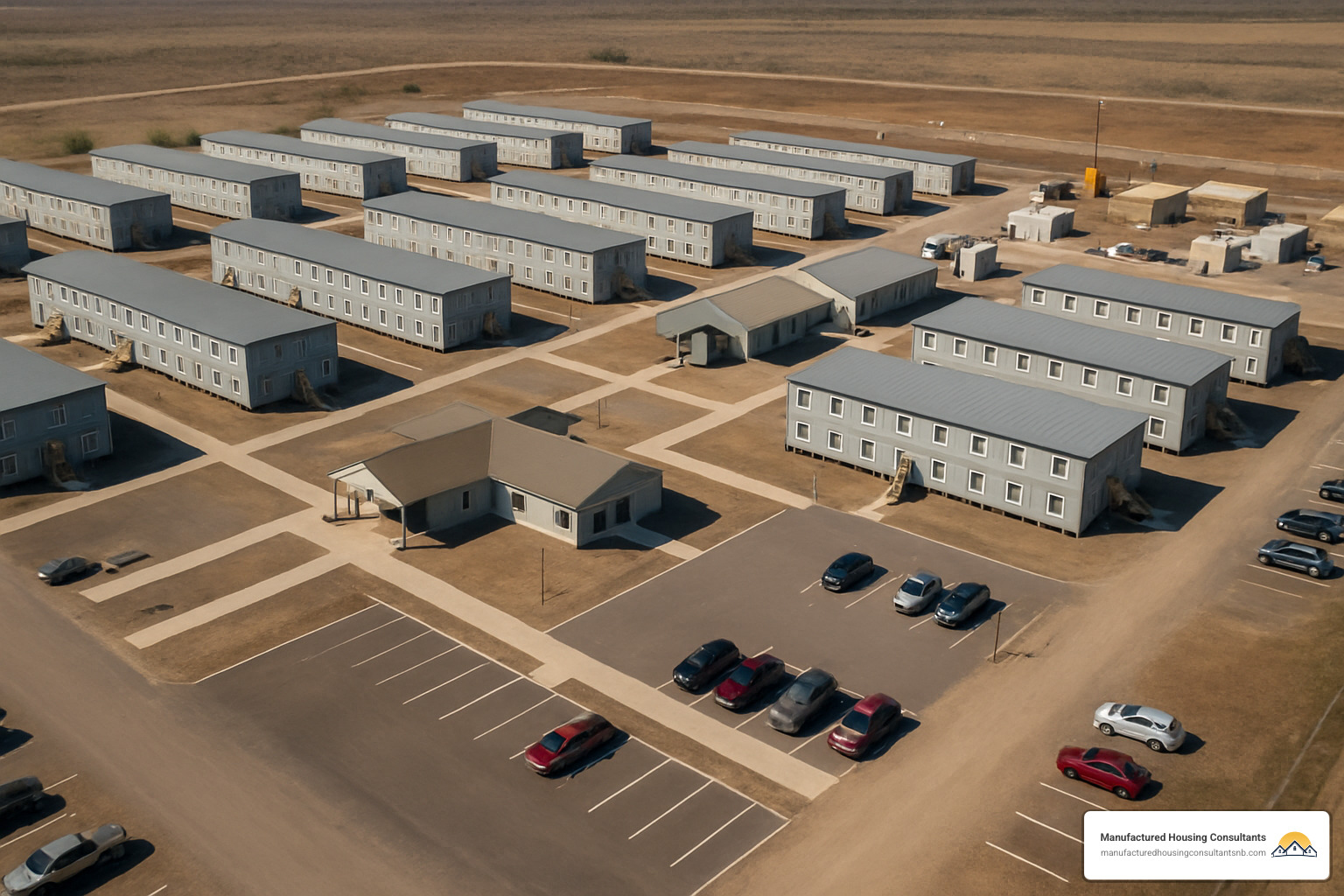
Small deployments typically house 48-100 beds, while medium deployments accommodate 100-500 workers. Large deployments can support 500-1,200 beds, and mega projects can house an impressive 1,200-2,400+ workers in a single location. This scalability makes modular solutions appropriate for projects of virtually any size.
At Manufactured Housing Consultants in New Braunfels, Texas, we’ve seen growing demand across all these categories. Our experience with 11 top manufacturers allows us to match the right housing solution to each client’s specific needs, whether they’re looking for basic accommodations or premium facilities with extensive amenities. We pride ourselves on understanding the unique requirements of different industries and providing customized solutions that improve worker wellbeing while meeting operational goals.
Implementing Modular Workforce Housing: Design, Compliance & Financing
Let’s talk about bringing your modular workforce housing project to life! This isn’t just about plopping down some buildings—it’s about creating a thoughtful solution that meets your specific needs while navigating regulations and making smart financial choices.
When we work with clients here in New Braunfels, we find that successful implementation typically brings together several key players: project managers defining the housing requirements, manufacturers designing the units, site preparation teams getting the ground ready, compliance experts handling permits, and financial planners structuring the deals. At Manufactured Housing Consultants, we coordinate all these moving parts so you don’t have to juggle multiple vendors.
The real beauty of modular workforce housing becomes clear when you look at the complete financial picture. The upfront costs are typically lower than traditional construction, but the true value goes much deeper. Think about getting your project up and running months earlier—that’s revenue flowing in sooner. Consider how comfortable workers stay longer, saving you the headache and expense of constant recruitment. Factor in the reduced transportation costs and the potential to reuse these structures at future sites. Suddenly, the value proposition becomes crystal clear.
And let’s not forget about going green! Today’s modular units aren’t the energy hogs of yesteryear. Modern modular workforce housing incorporates energy-efficient appliances, superior insulation, LED lighting, and water-saving features that not only reduce your environmental footprint but also trim those monthly utility bills. Your workers—and your finance department—will thank you.
Customization and Code Compliance in Modular Workforce Housing
If you’re picturing cookie-cutter boxes when you think of modular workforce housing, it’s time for an update! Today’s modular units offer remarkable customization while still adhering to strict building codes and safety standards.
Want to configure different bedroom layouts? No problem. Need specific amenities like full kitchens, laundry facilities, or entertainment systems? Absolutely doable. Looking for exterior finishes that match your company’s aesthetic or blend with local architecture? We’ve got you covered. As one of our manufacturers likes to say, “Our modular buildings can be finished to appear indistinguishable from traditional construction.”
The customization extends to climate adaptation too. Whether you’re dealing with Texas heat or need units for a project in colder climates, modern modular workforce housing can be engineered accordingly. Arctic packages for extreme cold, improved insulation for desert heat, hurricane-resistant construction—the options adapt to your environment.
Smart technology has also found its way into workforce housing. Today’s units often feature energy management systems, security access controls, remote monitoring capabilities, and built-in Wi-Fi solutions that make life more comfortable and operations more efficient.
But all this flexibility doesn’t mean cutting corners on safety. Despite their rapid deployment capabilities, modular workforce housing units must meet or exceed all applicable building codes and safety standards. They comply with local building requirements, International Building Code standards, fire safety regulations, accessibility guidelines when needed, and proper electrical and plumbing codes.
In fact, the factory-controlled environment actually improves code compliance through consistent quality control and multiple inspection points. The result? Fewer defects and higher overall quality compared to traditional on-site construction where weather and other variables can impact building integrity.
For environmentally conscious clients, we offer Affordable Eco-Friendly Modular Homes that balance code compliance with sustainability—an increasingly important consideration for companies implementing workforce housing solutions.
Deployment Timelines, Logistics & Sustainability Advantages
One of the most compelling aspects of modular workforce housing is just how quickly it can become operational. While traditional construction might keep you waiting for a year or more, modular solutions follow a streamlined, predictable process that gets your workforce properly housed in a fraction of the time.
The typical deployment follows a logical sequence. We start with a 2-4 week planning and design phase where we assess your site, gather requirements, select and customize units, and handle permitting. While your units are being manufactured in a climate-controlled factory over the next 4-12 weeks, we’re simultaneously preparing your site—pouring foundations, connecting utilities, developing access roads, and setting up drainage systems.
Transportation and installation generally take just 1-3 weeks, with units arriving just when they’re needed—no long-term storage required. After a final week of commissioning, testing systems, furnishing the units, and training your staff, you’re ready for occupancy. All told, your modular workforce housing can be operational in 8-20 weeks from project kickoff, compared to 12-18 months for traditional construction.
Several innovations have made this process remarkably smooth. Skid-mount systems eliminate the need for permanent foundations, allowing units to be placed on prepared surfaces with minimal site work. As one provider puts it, “Our 3-part skid-mount system means optimum space efficiency.” Just-in-time delivery coordination minimizes on-site storage needs, and the prefabricated nature of these units drastically reduces on-site construction activities.
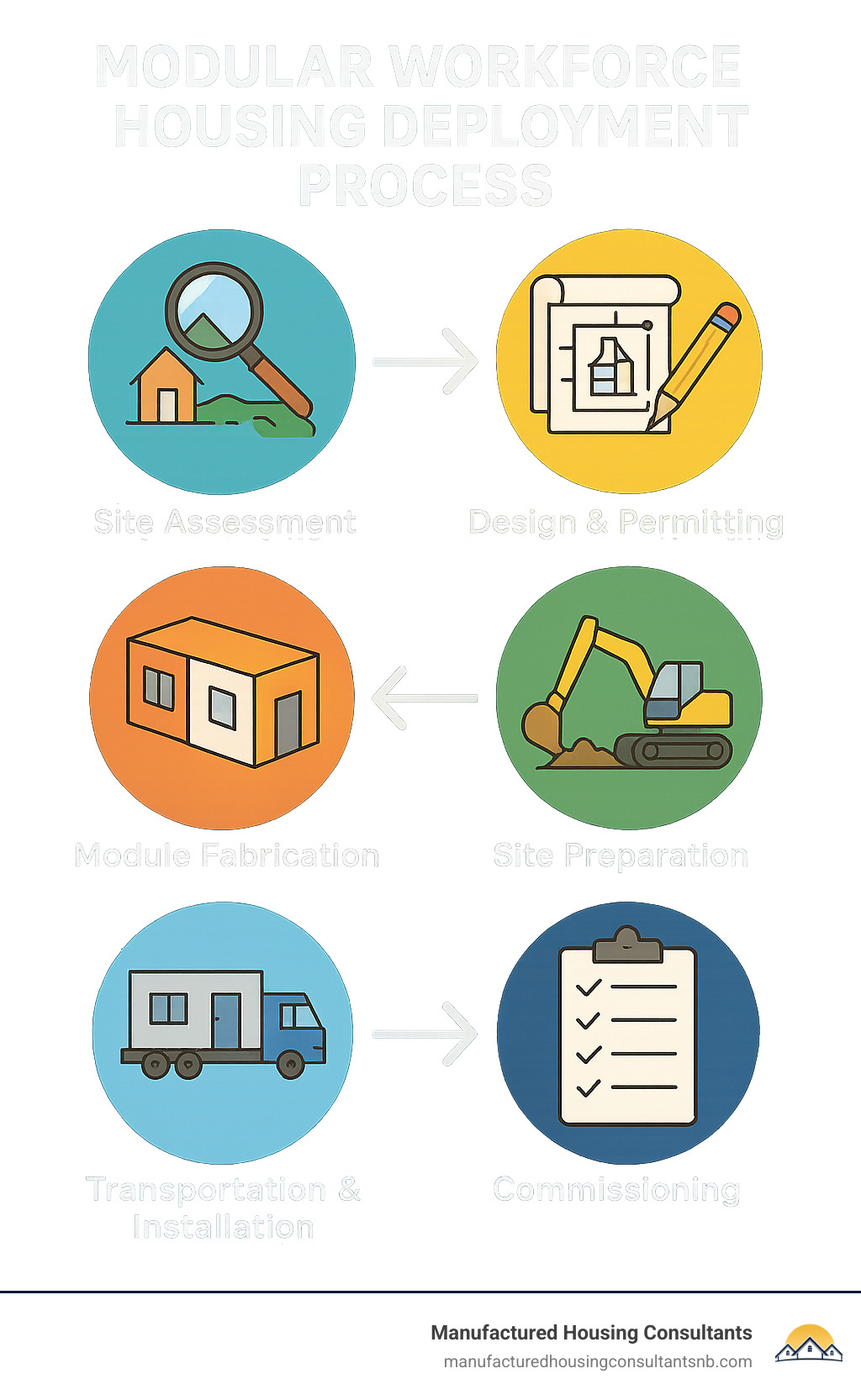
The environmental benefits are substantial too. Factory production generates 70-90% less waste than traditional construction, with most manufacturers implementing recycling programs. Modern units incorporate high-performance insulation and energy-efficient systems that reduce operational energy consumption by 20-30%. The streamlined manufacturing process, reduced transportation requirements, and minimal site disturbance combine to lower the overall carbon footprint by up to 40%.
According to scientific research on sustainable construction, these environmental benefits translate to healthier living environments for workers and reduced ecological impact for sensitive deployment locations—a win-win for everyone involved.
Here at Manufactured Housing Consultants, we understand that rapid deployment is often critical for our clients throughout Texas. Our streamlined processes ensure that your workforce housing needs are met efficiently and with minimal environmental disruption.
Financing, Leasing & Next Steps
When it comes to acquiring your modular workforce housing, you’ve got options! Each approach has its advantages depending on your project timeline, available capital, and long-term plans.
Purchasing makes the most sense for longer projects lasting three years or more. You’ll own the asset outright, benefit from tax advantages through depreciation, and retain the units’ residual value for future resale or redeployment. While this option requires a higher initial investment, the long-term costs are typically lower, and you can customize the units exactly to your specifications.
Leasing works beautifully for medium-term projects of 1-3 years. It preserves your capital for core business operations, provides predictable monthly expenses for easier budgeting, and often includes maintenance in the agreement. Many leases also offer end-of-term purchase options if your plans change.
Rental is perfect for short-term projects under a year. You’ll have minimal upfront costs, maximum flexibility as your requirements change, quick deployment from existing inventory, and often all-inclusive pricing options that simplify your accounting.
When evaluating these options, consider the broader financial picture. Depending on your agreement structure, you might benefit from significant tax advantages through depreciation, business expense deductions, or investment tax credits. Your ROI calculations should factor in not just the direct housing costs versus alternatives like hotels or per diems, but also the impact on worker productivity and retention, reduced transportation expenses, schedule acceleration benefits, and residual value when your project wraps up.
Don’t underestimate the value of quality housing on your workforce retention. Companies typically see a 15-20% reduction in turnover, decreased recruitment and training costs, improved productivity from experienced workers, and improved ability to attract skilled labor when they provide comfortable, dignified accommodations.
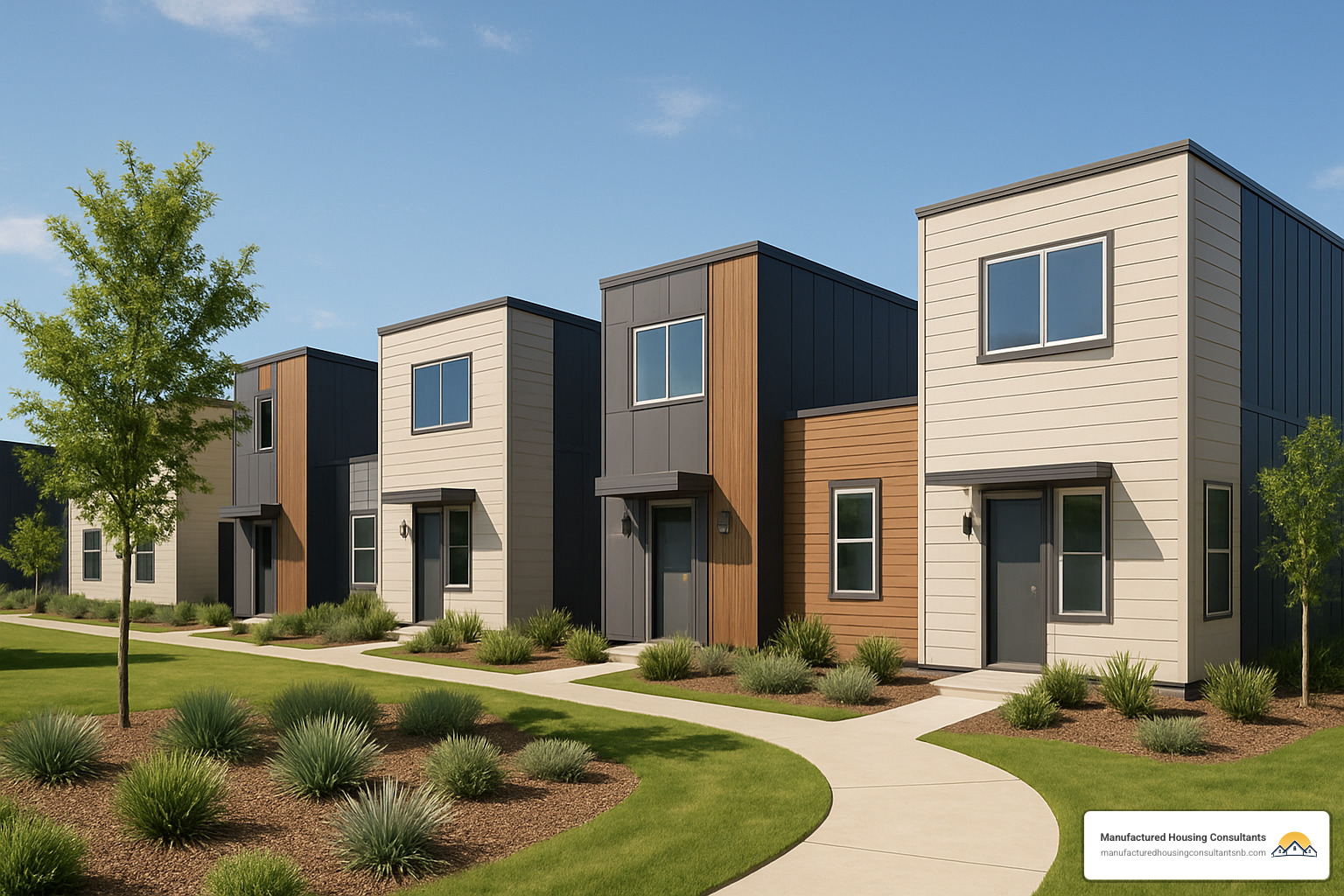
At Manufactured Housing Consultants, we offer competitive Financing for Modular Homes with options custom to your specific business needs. Our guaranteed lowest pricing commitment ensures you receive the best value for your investment.
Ready to get started? The path forward is straightforward:
Begin by assessing your workforce housing requirements—how many workers you need to accommodate, your project duration and location, desired amenities, budget parameters, and timeline constraints. Then reach out to our team here at Manufactured Housing Consultants for a no-obligation consultation about your specific needs.
We’ll help arrange a professional evaluation of your proposed location, work with you to configure the optimal housing solution, determine the most advantageous acquisition approach, and finalize clear agreements with specific timelines and terms. From there, we’ll coordinate the entire implementation process from site preparation through delivery and installation.
As a leading provider of manufactured housing solutions in New Braunfels, Texas, we understand the unique challenges of workforce housing. Our experience with 11 top manufacturers allows us to offer the best selection and guaranteed lowest pricing on modular workforce housing solutions.
To explore how our modular options can meet your workforce housing needs, visit our website to learn More info about our homes or contact our specialists directly. We’re ready to help you develop a housing strategy that supports your operational goals while ensuring your workers feel at home, even when they’re far from home.
